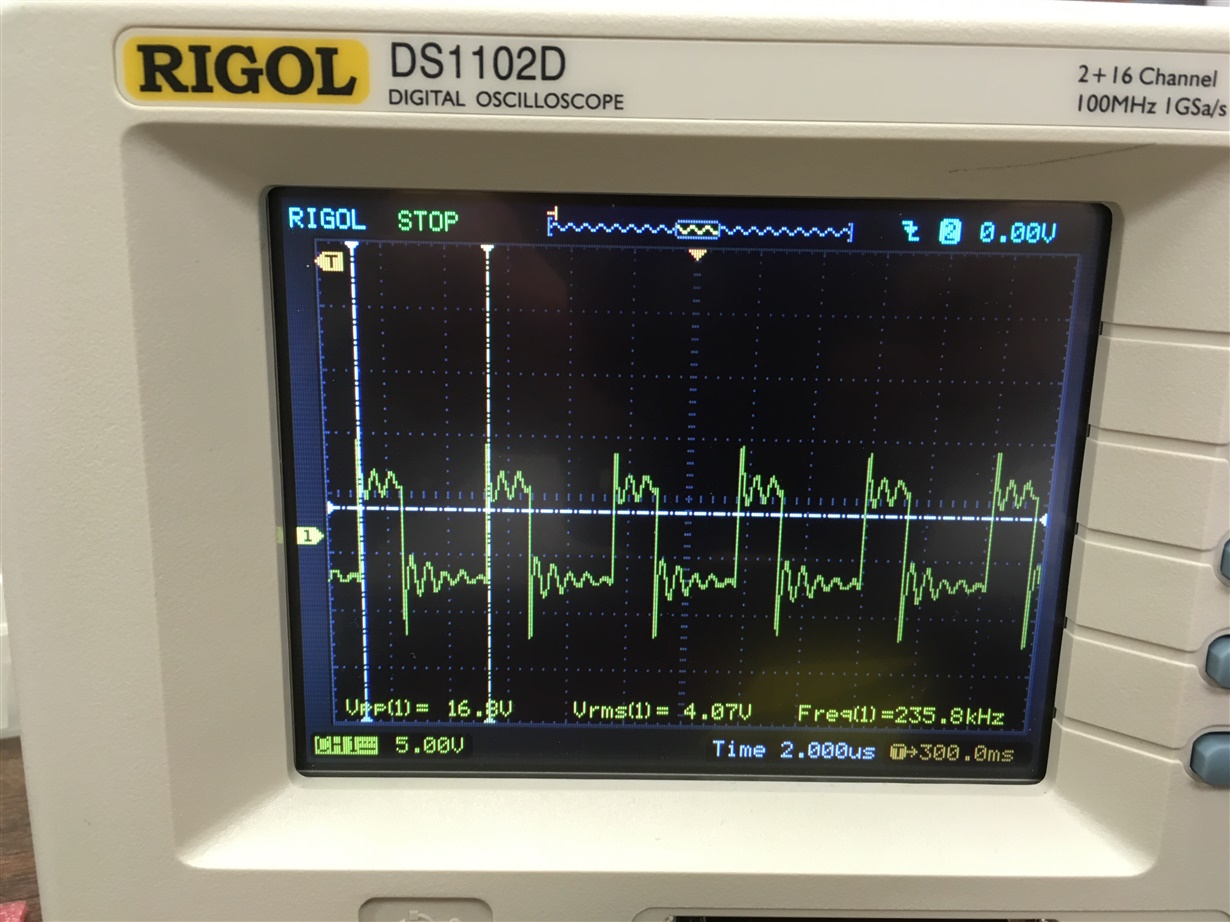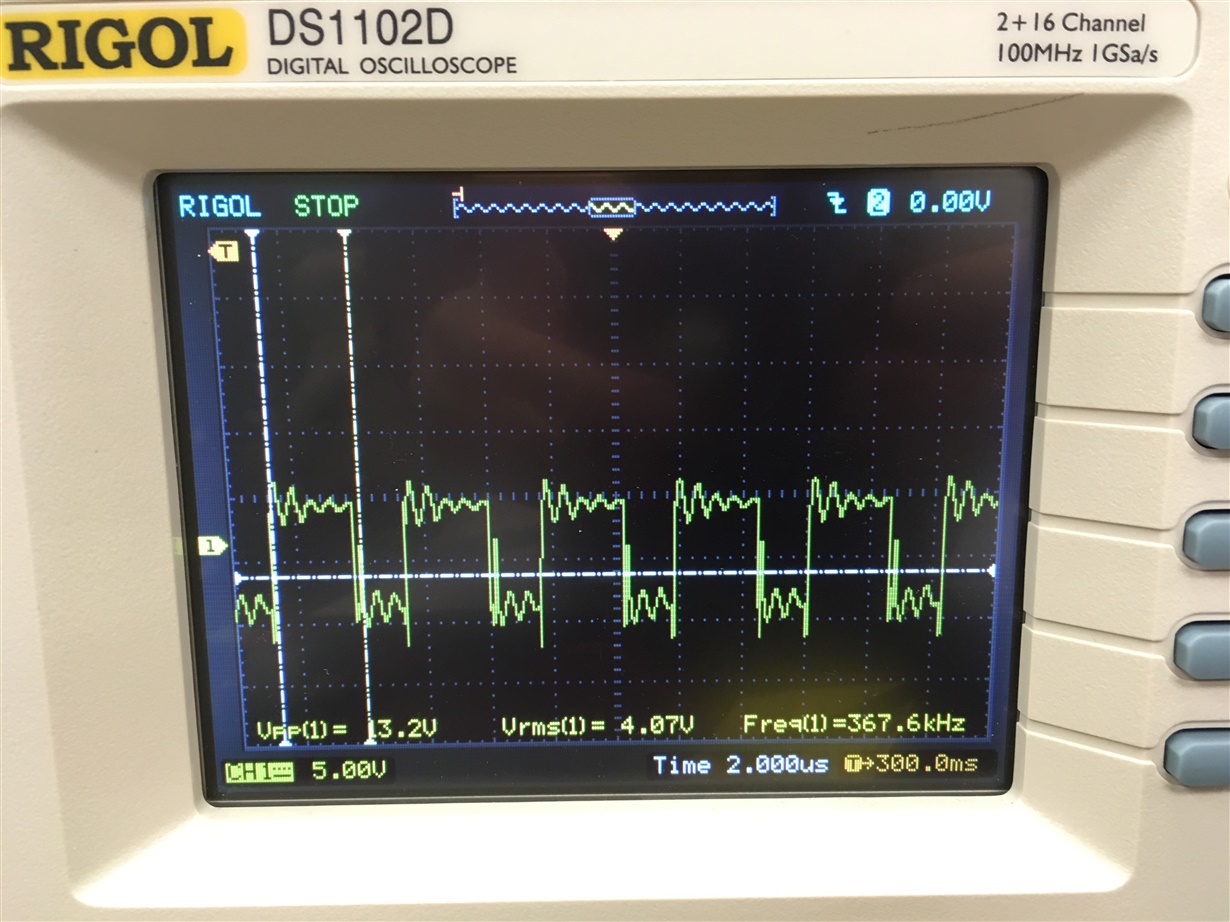Hi,
This reference design was assembled and tested physically at Vin = 24Vdc, with a DC electronic load (CSI3711A).
The load was set to draw a constant current of 5A.
Test procedure:
1. Turned on Vin=24Vdc from a bench power supply to PMP5296
2. I see Vout=12Vdc + approx 600 mVp2p at no load
3. Turned on the load to 5A
4. I see about 4.21 Vdcp2p !! (attached picture)
According to the waveforms found in TI's test report for this design, the ripples should not exceed 200mVp2p under these conditions (24Vin and 5A load).
Could you please elaborate on your test conditions? What type of load was used during TI's testing?
Attached are also the switching waveforms, primary and secondary, at a 5A load for your reference.
Thanks for your help,




